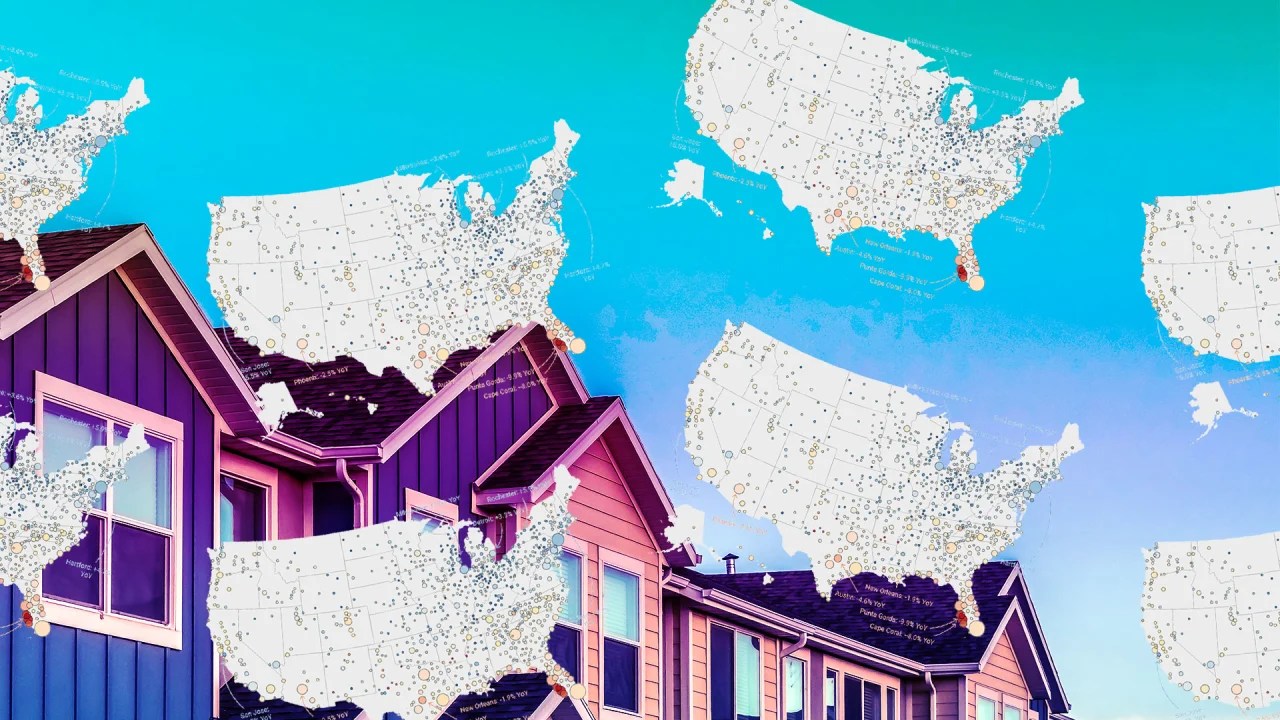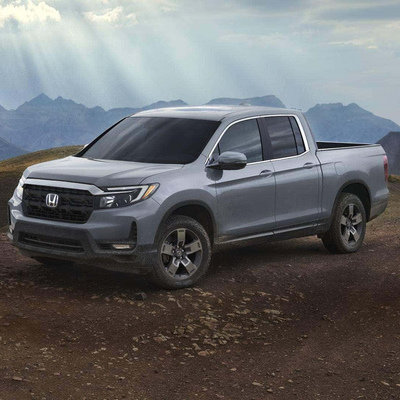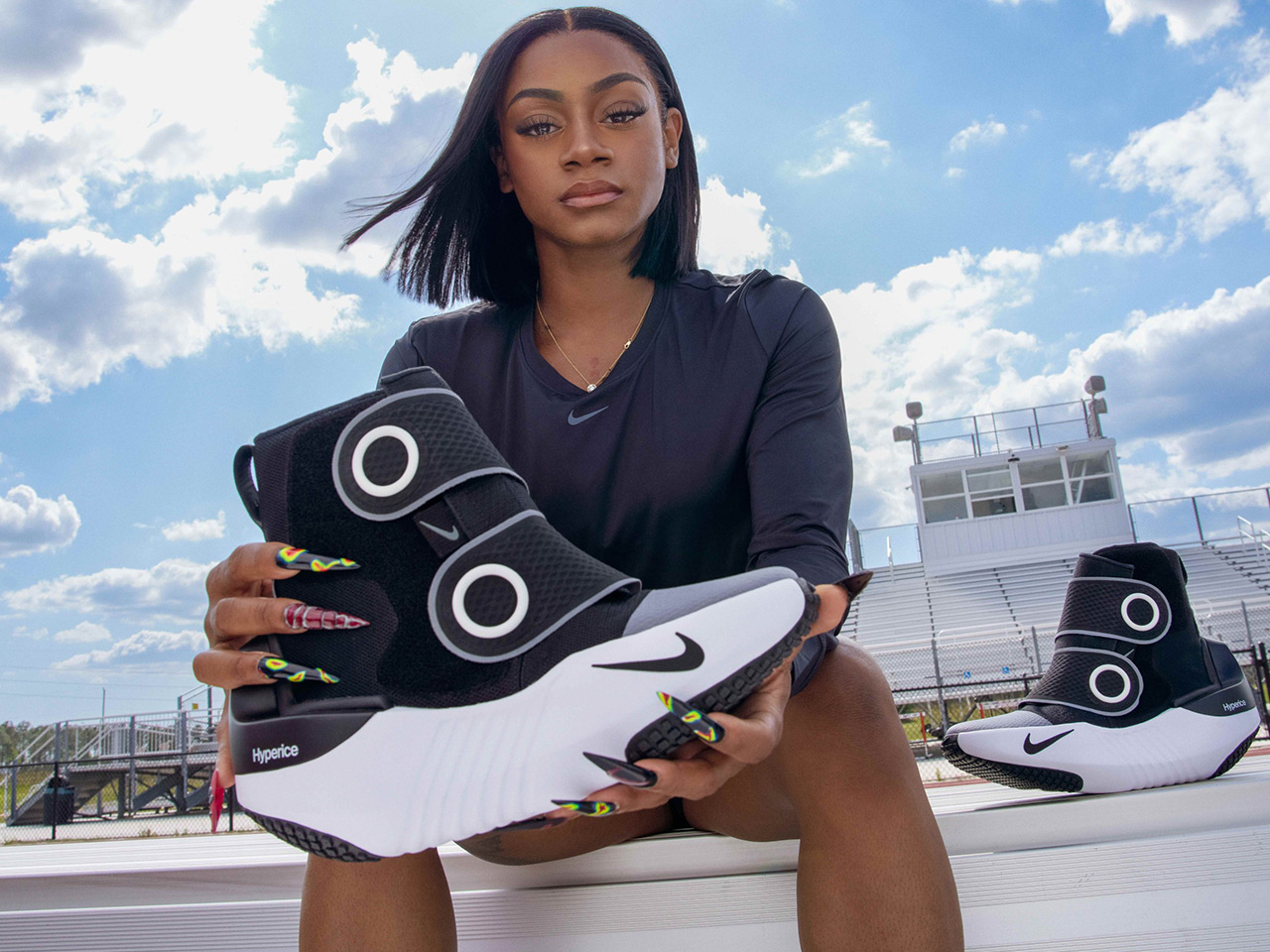0 Commentaires
0 Parts
61 Vue

Annuaire
Annuaire
-
Connectez-vous pour aimer, partager et commenter!
-
 WWW.TECHRADAR.COMSynology confirms it is cracking down on third-party NAS hard drivesSynology says that using its own hard drives or pre-approved third-party models can reduce failures.0 Commentaires 0 Parts 66 Vue
WWW.TECHRADAR.COMSynology confirms it is cracking down on third-party NAS hard drivesSynology says that using its own hard drives or pre-approved third-party models can reduce failures.0 Commentaires 0 Parts 66 Vue -
 WWW.CNBC.COMGoogle says DOJ's proposal for breakup would harm U.S. in 'global race with China'As Google enters the court room for its antitrust remedies trial, the company is trying to position itself as a key piece of American innovation.0 Commentaires 0 Parts 65 Vue
WWW.CNBC.COMGoogle says DOJ's proposal for breakup would harm U.S. in 'global race with China'As Google enters the court room for its antitrust remedies trial, the company is trying to position itself as a key piece of American innovation.0 Commentaires 0 Parts 65 Vue -
 WWW.FASTCOMPANY.COMHousing market shift: 60 major markets are now seeing falling home pricesWant more housing market stories from Lance Lambert’s ResiClub in your inbox? Subscribe to the ResiClub newsletter. National home prices have risen by 1.2% year-over-year from March 2024 to March 2025, according to the Zillow Home Value Index, a decelerated rate from the 4.6% year-over-year rate last spring. However, not every housing market is seeing rising home prices. Among the nation’s 300 largest metro-area housing markets, 60 markets are seeing falling home prices on a year-over-year basis. That’s up from 42 markets in February and 31 markets in January. While home prices continue to rise in regions with tight inventory—such as much of the Northeast and Midwest—many housing markets in states like Arizona, Texas, Florida, and Louisiana, where inventory has now surpassed pre-pandemic 2019 levels, are experiencing modest home price corrections, according to ResiClub’s latest analysis. These year-over-year declines are evident in major metros such as Austin (-4.6%); Tampa (-4.5%); San Antonio (-2.7%); Phoenix (-2.5%); Dallas (-2.4%); Jacksonville, Florida (-2.3%); Orlando (-2.2%); New Orleans (-1.9%); Atlanta (-1.8%); and Miami (-1.5%). The markets seeing the most softness, where homebuyers are gaining leverage, are primarily located in Sun Belt regions, particularly the Gulf Coast and Mountain West. These areas saw major price surges during the pandemic housing boom, with home price growth outpacing local income levels. As pandemic-driven migration slowed and mortgage rates rose, markets like Tampa and Austin faced challenges, relying on local income levels to support frothy home prices. This softening trend is further compounded by an abundance of new home supply in the Sun Belt. Builders are often willing to lower prices or offer affordability incentives to maintain sales, which also has a cooling effect on the resale market. Some buyers, who would have previously considered existing homes, are now opting for new homes with more favorable deals. Will this softening continue this year? It looks like it. A key indicator to watch will be active inventory levels. If weaker markets like Tampa continue to see substantial increases in active inventory—already above pre-pandemic levels—it may signal ongoing softening, potentially creating more opportunities for homebuyers.0 Commentaires 0 Parts 70 Vue
WWW.FASTCOMPANY.COMHousing market shift: 60 major markets are now seeing falling home pricesWant more housing market stories from Lance Lambert’s ResiClub in your inbox? Subscribe to the ResiClub newsletter. National home prices have risen by 1.2% year-over-year from March 2024 to March 2025, according to the Zillow Home Value Index, a decelerated rate from the 4.6% year-over-year rate last spring. However, not every housing market is seeing rising home prices. Among the nation’s 300 largest metro-area housing markets, 60 markets are seeing falling home prices on a year-over-year basis. That’s up from 42 markets in February and 31 markets in January. While home prices continue to rise in regions with tight inventory—such as much of the Northeast and Midwest—many housing markets in states like Arizona, Texas, Florida, and Louisiana, where inventory has now surpassed pre-pandemic 2019 levels, are experiencing modest home price corrections, according to ResiClub’s latest analysis. These year-over-year declines are evident in major metros such as Austin (-4.6%); Tampa (-4.5%); San Antonio (-2.7%); Phoenix (-2.5%); Dallas (-2.4%); Jacksonville, Florida (-2.3%); Orlando (-2.2%); New Orleans (-1.9%); Atlanta (-1.8%); and Miami (-1.5%). The markets seeing the most softness, where homebuyers are gaining leverage, are primarily located in Sun Belt regions, particularly the Gulf Coast and Mountain West. These areas saw major price surges during the pandemic housing boom, with home price growth outpacing local income levels. As pandemic-driven migration slowed and mortgage rates rose, markets like Tampa and Austin faced challenges, relying on local income levels to support frothy home prices. This softening trend is further compounded by an abundance of new home supply in the Sun Belt. Builders are often willing to lower prices or offer affordability incentives to maintain sales, which also has a cooling effect on the resale market. Some buyers, who would have previously considered existing homes, are now opting for new homes with more favorable deals. Will this softening continue this year? It looks like it. A key indicator to watch will be active inventory levels. If weaker markets like Tampa continue to see substantial increases in active inventory—already above pre-pandemic levels—it may signal ongoing softening, potentially creating more opportunities for homebuyers.0 Commentaires 0 Parts 70 Vue -
 WWW.CORE77.COMWhy Tariffs Can be Tricky: The Honda Ridgeline is a More "American" Truck than a Ford F-150Once upon a time American factories, like factories around the world, had raw materials delivered to one end. Out of the other end emerged finished products: Automobiles, sewing machines, appliances.Those days are long gone, and they're not coming back. Manufacturing and supply chains have grown ever more complex in the relentless pursuit of efficiency and maximizing profits; for instance, it's cheaper to have wiring harnesses made in Vietnam than Detroit. And modern manufacturing complexity means components can require multiple fabrication steps in different countries. Some parts for automobiles "made" in the U.S. might cross borders seven times before being finished and installed into the final product.All of which means referring to a car as American, Japanese or German no longer means what it once did. What is the most American car, that is to say, the most American-built car? Automotive journalist Aaron Turpen crunched the numbers for his "Made in America: Vehicles least likely to see impact from tariffs" article on New Atlas. The results were surprising, to say the least.For nearly 40 years the Ford F-150 has been not only the bestselling pickup truck, but the bestselling vehicle in America. But it's not the most American-built vehicle nor truck. That distinction goes to…the Honda Ridgeline. With a U.S.-made engine and transmission, and final assembly done at the company's plant in Alabama, its 72.5%-U.S.-built makeup makes it "the most American-made pickup truck you can buy."Honda RidgelineShockingly the Ford F-150, according to the NHTSA, has a U.S.-built parts content of just 32%--and even some of that percentage is split with Canada.Ford F-150The Honda Ridgeline comes in second place for most American-built vehicle on Turpen's list. Tied for first place are two vehicles, the Dodge Durango and the Tesla Model 3, both at 73% U.S.-made.Dodge DurangoTesla Model YOverall, the top ten on Turpen's list is dominated by Honda, Jeep and Tesla, with a surprising outlier: The Volkswagen ID.4, fourth on the list at 70%. Volkswagen ID.4Read the whole thing here.0 Commentaires 0 Parts 66 Vue
WWW.CORE77.COMWhy Tariffs Can be Tricky: The Honda Ridgeline is a More "American" Truck than a Ford F-150Once upon a time American factories, like factories around the world, had raw materials delivered to one end. Out of the other end emerged finished products: Automobiles, sewing machines, appliances.Those days are long gone, and they're not coming back. Manufacturing and supply chains have grown ever more complex in the relentless pursuit of efficiency and maximizing profits; for instance, it's cheaper to have wiring harnesses made in Vietnam than Detroit. And modern manufacturing complexity means components can require multiple fabrication steps in different countries. Some parts for automobiles "made" in the U.S. might cross borders seven times before being finished and installed into the final product.All of which means referring to a car as American, Japanese or German no longer means what it once did. What is the most American car, that is to say, the most American-built car? Automotive journalist Aaron Turpen crunched the numbers for his "Made in America: Vehicles least likely to see impact from tariffs" article on New Atlas. The results were surprising, to say the least.For nearly 40 years the Ford F-150 has been not only the bestselling pickup truck, but the bestselling vehicle in America. But it's not the most American-built vehicle nor truck. That distinction goes to…the Honda Ridgeline. With a U.S.-made engine and transmission, and final assembly done at the company's plant in Alabama, its 72.5%-U.S.-built makeup makes it "the most American-made pickup truck you can buy."Honda RidgelineShockingly the Ford F-150, according to the NHTSA, has a U.S.-built parts content of just 32%--and even some of that percentage is split with Canada.Ford F-150The Honda Ridgeline comes in second place for most American-built vehicle on Turpen's list. Tied for first place are two vehicles, the Dodge Durango and the Tesla Model 3, both at 73% U.S.-made.Dodge DurangoTesla Model YOverall, the top ten on Turpen's list is dominated by Honda, Jeep and Tesla, with a surprising outlier: The Volkswagen ID.4, fourth on the list at 70%. Volkswagen ID.4Read the whole thing here.0 Commentaires 0 Parts 66 Vue -
 WWW.YANKODESIGN.COMNike Hyperboot isn’t another performance shoe, it’s the ultimate recovery gear for serious athletesIf you run a few miles every morning, play football regularly, or spend occasional time on the track, you know the importance of a recovery footwear. It allows the body to recuperate, providing relief to the feet, ankles, and knees. While most of the available shoes/slides meant for recovery cost under a $100, they are well within the range we can afford. It is not the case with the new Nike x Hyperice Hyperboot. It costs a staggering $899, and is therefore only something serious athletes would put their money on. Nike and Hyperice both obsess about the athletes. They create and innovative, putting an athlete at the center of the idea. Such is the case with Hyperboot, which reimagines what a recovery shoe can be and how it can better assist an athlete in warm-up and recovery. It is a silhouette that uses heat and compression in tandem to help with the foot recovery. And since it’s from Nike, rest assured it is made from premium footwear materials, which should together with the imbibed tech, justify the tag. Designer: Nike x Hyperice For every athlete competing at the world stage – or even for the other competitive performers – recovery is most important to get their bodies ready for the next day. It is also equally imperative for them to warm-up the body, especially the feet and legs, to avoid injuries and perform better. This is what Nike x Hyperice intends to provide with the Hyperboot: A shoe that combines Nike’s footwear experience with the Hyperice expertise in recovery technologies. The Hyperboot is built ground up for a purpose. Therefore, performance was never a question with this silhouette. The idea was always focused on helping the wearer recover, for which Hyperice had to stick within the Nike shoe design and integrate recovery tech into it, without changing the elegance of the shoe. So, for the interplay of design and functionality, the Hyperboot uses dynamic air compression to provide, recovery essentials, heat, and compression around the Achilles and the heel area of the wearer. Using the air compression, the shoe is able to drive heat deeper into body, which can better assist with the warm-up and recovery process of an athlete. With the better mobility in the joint and deeper penetration of heat into the tissues, the Hypeboot can create a wonderful recuperating experience, which not only helps around the foot but also allows the heat to travel up to the calf and the leg for more relief and comfort. Athletes can customize compression intensity and temperature modules to their preference pre- and post-workout using the Hyperice App. Interestingly, the Hyperboot is not only about recovery, its midsole and outsole are designed to increase toe spring and add the heel spring, which makes it feel lighter when worn. For further stability and comfort, the shoe is high ankle, has an engineered mesh upper for breathability, and features removable insoles. Releasing May 17, 2025, this recovery silhouette for serious athletes will set you back $899. The post Nike Hyperboot isn’t another performance shoe, it’s the ultimate recovery gear for serious athletes first appeared on Yanko Design.0 Commentaires 0 Parts 65 Vue
WWW.YANKODESIGN.COMNike Hyperboot isn’t another performance shoe, it’s the ultimate recovery gear for serious athletesIf you run a few miles every morning, play football regularly, or spend occasional time on the track, you know the importance of a recovery footwear. It allows the body to recuperate, providing relief to the feet, ankles, and knees. While most of the available shoes/slides meant for recovery cost under a $100, they are well within the range we can afford. It is not the case with the new Nike x Hyperice Hyperboot. It costs a staggering $899, and is therefore only something serious athletes would put their money on. Nike and Hyperice both obsess about the athletes. They create and innovative, putting an athlete at the center of the idea. Such is the case with Hyperboot, which reimagines what a recovery shoe can be and how it can better assist an athlete in warm-up and recovery. It is a silhouette that uses heat and compression in tandem to help with the foot recovery. And since it’s from Nike, rest assured it is made from premium footwear materials, which should together with the imbibed tech, justify the tag. Designer: Nike x Hyperice For every athlete competing at the world stage – or even for the other competitive performers – recovery is most important to get their bodies ready for the next day. It is also equally imperative for them to warm-up the body, especially the feet and legs, to avoid injuries and perform better. This is what Nike x Hyperice intends to provide with the Hyperboot: A shoe that combines Nike’s footwear experience with the Hyperice expertise in recovery technologies. The Hyperboot is built ground up for a purpose. Therefore, performance was never a question with this silhouette. The idea was always focused on helping the wearer recover, for which Hyperice had to stick within the Nike shoe design and integrate recovery tech into it, without changing the elegance of the shoe. So, for the interplay of design and functionality, the Hyperboot uses dynamic air compression to provide, recovery essentials, heat, and compression around the Achilles and the heel area of the wearer. Using the air compression, the shoe is able to drive heat deeper into body, which can better assist with the warm-up and recovery process of an athlete. With the better mobility in the joint and deeper penetration of heat into the tissues, the Hypeboot can create a wonderful recuperating experience, which not only helps around the foot but also allows the heat to travel up to the calf and the leg for more relief and comfort. Athletes can customize compression intensity and temperature modules to their preference pre- and post-workout using the Hyperice App. Interestingly, the Hyperboot is not only about recovery, its midsole and outsole are designed to increase toe spring and add the heel spring, which makes it feel lighter when worn. For further stability and comfort, the shoe is high ankle, has an engineered mesh upper for breathability, and features removable insoles. Releasing May 17, 2025, this recovery silhouette for serious athletes will set you back $899. The post Nike Hyperboot isn’t another performance shoe, it’s the ultimate recovery gear for serious athletes first appeared on Yanko Design.0 Commentaires 0 Parts 65 Vue -
 WWW.CREATIVEBLOQ.COMHow to design and draw a lovable character for animation using ProcreateBrian Weisz reveals his process for creating a sparkling unicorn and shares valuable insights into working with your clients.0 Commentaires 0 Parts 55 Vue
WWW.CREATIVEBLOQ.COMHow to design and draw a lovable character for animation using ProcreateBrian Weisz reveals his process for creating a sparkling unicorn and shares valuable insights into working with your clients.0 Commentaires 0 Parts 55 Vue -
 WWW.WIRED.COMThe ACLU Is Suing the Government to Get Access to DOGE RecordsThe ACLU claims the Department of Veterans Affairs and the Social Security Administration have violated the Freedom of Information Act.0 Commentaires 0 Parts 58 Vue
WWW.WIRED.COMThe ACLU Is Suing the Government to Get Access to DOGE RecordsThe ACLU claims the Department of Veterans Affairs and the Social Security Administration have violated the Freedom of Information Act.0 Commentaires 0 Parts 58 Vue -
 APPLEINSIDER.COMThird developer betas of iOS 18.5, macOS 15.5 seeded to testersApple is now on its third round for its current generation of developer betas, testing new builds of iOS 18.5, iPadOS 18.5, macOS 15.5, tvOS 18.5, watchOS 11.5, and visionOS 2.5.Examples of Apple Intelligence at work. The third round of testing for iOS 18.5, iPadOS 18.5, macOS 15.5, tvOS 18.5, watchOS 11.5, and visionOS 2.5 arrived after the second, which landed on April 14. The first round for this generation was handed out on March 17.The third iOS 18.5 and iPadOS 18.5 developer betas share build number 22F5053j, replacing 22F5053f. The third macOS Sequoia 15.5 build uses number 24F5053j, up from 24F5053f. Continue Reading on AppleInsider | Discuss on our Forums0 Commentaires 0 Parts 73 Vue
APPLEINSIDER.COMThird developer betas of iOS 18.5, macOS 15.5 seeded to testersApple is now on its third round for its current generation of developer betas, testing new builds of iOS 18.5, iPadOS 18.5, macOS 15.5, tvOS 18.5, watchOS 11.5, and visionOS 2.5.Examples of Apple Intelligence at work. The third round of testing for iOS 18.5, iPadOS 18.5, macOS 15.5, tvOS 18.5, watchOS 11.5, and visionOS 2.5 arrived after the second, which landed on April 14. The first round for this generation was handed out on March 17.The third iOS 18.5 and iPadOS 18.5 developer betas share build number 22F5053j, replacing 22F5053f. The third macOS Sequoia 15.5 build uses number 24F5053j, up from 24F5053f. Continue Reading on AppleInsider | Discuss on our Forums0 Commentaires 0 Parts 73 Vue -
 ARCHINECT.COM'The Architecture of Polarization': 2025 Carnegie Fellow Aaron Cayer on his award-winning researchCalifornia State Polytechnic University, Pomona assistant professor of architecture Aaron Cayer is one of 26 just-announced Andrew Carnegie Fellows this year for his project titled 'The Architecture of Polarization: How Our Buildings and Builders Shape our Politics'. A timely look into the AEC industry’s influence over urban policies and segregation, the project aligns with the philanthropy’s larger $18 million initiative aimed at studying polarization in contemporary America. Cayer, whose first book Incorporating Architects: How American Architecture Became a Practice of Empire will be published by University of California Press later this June, also won the American Academy in Rome’s 2024 Rome Prize for his research. Cayer completed a PhD at UCLA in 2018. He provides some insights into the scope and implications of the project in a brief interview below. Related on Archinect: The American Academy in Rome announces 2023–24 Rome Prize Winners and Italian FellowsWhat was your motiva...0 Commentaires 0 Parts 51 Vue
ARCHINECT.COM'The Architecture of Polarization': 2025 Carnegie Fellow Aaron Cayer on his award-winning researchCalifornia State Polytechnic University, Pomona assistant professor of architecture Aaron Cayer is one of 26 just-announced Andrew Carnegie Fellows this year for his project titled 'The Architecture of Polarization: How Our Buildings and Builders Shape our Politics'. A timely look into the AEC industry’s influence over urban policies and segregation, the project aligns with the philanthropy’s larger $18 million initiative aimed at studying polarization in contemporary America. Cayer, whose first book Incorporating Architects: How American Architecture Became a Practice of Empire will be published by University of California Press later this June, also won the American Academy in Rome’s 2024 Rome Prize for his research. Cayer completed a PhD at UCLA in 2018. He provides some insights into the scope and implications of the project in a brief interview below. Related on Archinect: The American Academy in Rome announces 2023–24 Rome Prize Winners and Italian FellowsWhat was your motiva...0 Commentaires 0 Parts 51 Vue



